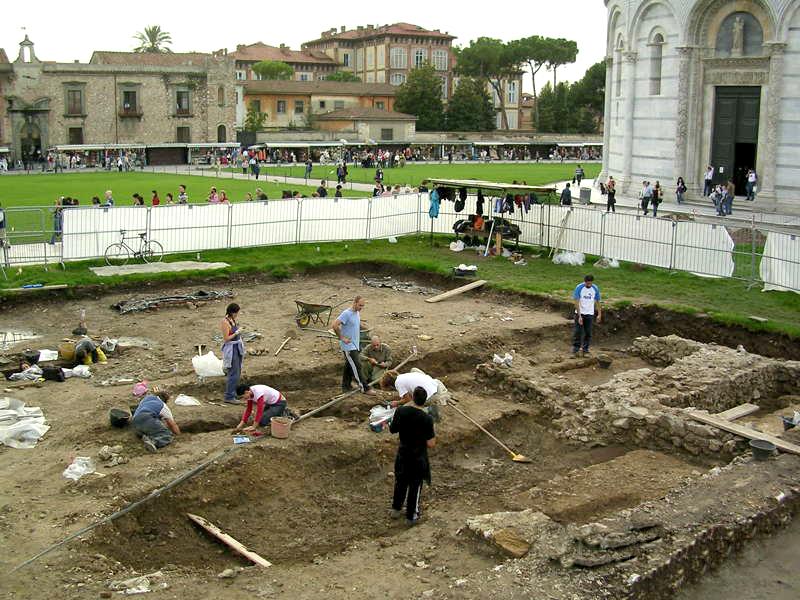After compiling findings from the 2003 to 2009 archaeological dig under the Piazza dei Miracoli (Square of Miracles) in Pisa, scholars have published photos and drawings of the extensive previously unknown structures buried under the piazza.
In 2003, while redoing the irrigation system under the grassy expanse around Pisa's Duomo and the Leaning Tower of Pisa, archaeologists uncovered a series of ruins that shed light on the usage of the area in the first millennium A.D., including an eleventh-century cathedral.
Though the newly discovered cathedral had three naves, an apse, and a crypt, it was significantly smaller than the current duomo. It appears to have been left incomplete to leave space for the Romanesque duomo still present in the piazza today.
Archaeology in Piazza dei Miracoli, a 648-page volume, details the evolution of the space from residential to sacred. When the piazza was the primary gateway into Pisa from the sea in the first century, it was occupied by a Roman domus, a mansion for members of the Roman elite, that was uncovered during the excavations.
For the next six hundred years, more crowded and smaller dwellings occupied the space until they in turn were replaced by a nucleus of tombs. A seventh-century Longobard stone coffin discovered during the dig has fascinated scholars due to the rich clothing of its occupant, an upper-class man from the Cipriano family clothed in precious materials, including a silver belt buckle signed by the artisan di Mauro. The tomb's costly materials have been safe from looters due to its location near the Baptistry.
Forty scholars, photographers and artists from the University of Pisa assembled the volume, aided by the Soprintendenza di Firenze, the restoration team from Opera della Primaziale Pisana, as well as noted scholars of Etruscan, Roman and Medieval Pisa, Gabriella Garzella, Stefano Bruni, Adriano Maggiani and Sauro Gelichi.










